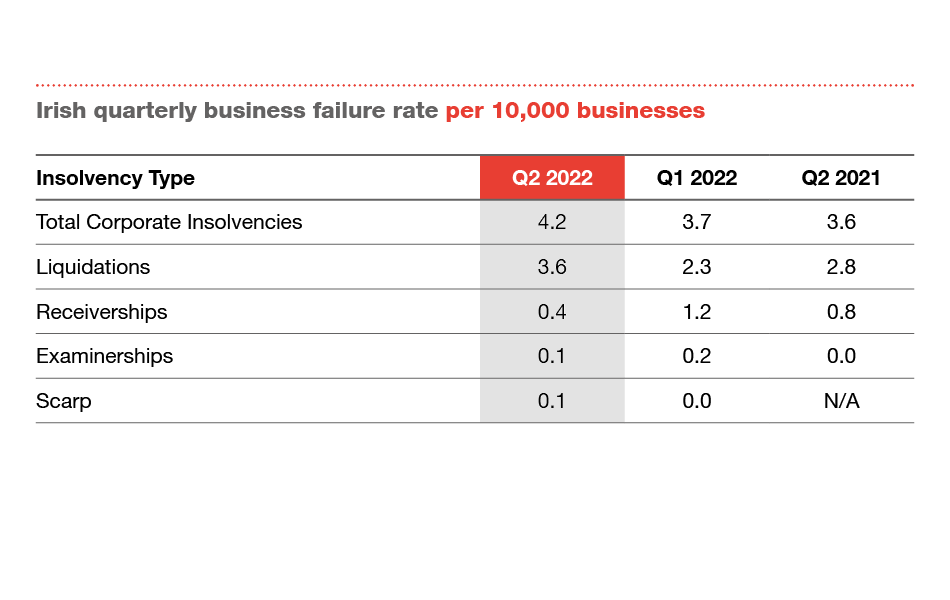
This report considers emerging insolvency trends and key restructuring issues facing Irish businesses. The business failure rates remain at record low levels, but there are signs that insolvencies may be on the rise.
While many businesses have survived the pandemic, business failures are beginning to increase slightly. Irish businesses are facing a number of challenges, including expiry of EWSS, high inflation, increasing interest rates and higher energy costs. With increased inflation and energy costs to be followed by rising interest rates, we expect a greater level of restructuring in the second half of 2022 and into 2023.
Q2 business failure insights
The business failure rate per 10,000 companies increased by 14% from Q1 2022 (3.7) to Q2 2022 (4.2).


Ireland's liquidation rate versus the UK
A clear divergence is beginning to emerge between the liquidation rates of the UK and Ireland. The UK recorded the highest number of creditors' voluntary liquidations (CVLs) on record in Q1 2022 (over 4,200).

Q1 industry and county insights
The travel and transport, arts, entertainment and recreation, and real estate sectors all saw significant decreases from peak pandemic failures.
Kilkenny (28 per 10,000) and Dublin (26 per 10,000) had the highest business failure rate of all counties over the last 12 months.
Revenue debt warehousing
At the end of May 2022, over 90,000 businesses were still availing of the warehousing scheme with €2.9 billion in tax debt still owing. This equates to an average of over €32,000 for each business.
Four key actions businesses can take now
Assess your working capital
Companies must re-appraise and shore up their liquidity and working capital requirements to address the unwinding of government support and debts accrued during the pandemic, while meeting renewed customer demand and delivering delayed investment.
Identify multiple funding sources
The limited availability of further government support will increase reliance on existing lenders, shareholders and access to the capital markets, which may be less forthcoming in sectors where the prospects for recovery and long-term growth are less clear.
Monitor your cash flow
In this uncertain and potentially stop-start pathway to recovery and economic growth, it is essential to monitor cash flow. Companies must develop realistic forecasts that take account of potential varying recovery scenarios and, in particular, increasing rates of inflation in Ireland and around the world.
Consider the future
The immediate demands don't just include day-to-day expenses, but also funding for future growth and adapting to the trends reshaping marketplaces and economies.
We are here to help you
The months and years ahead will undoubtedly be challenging for many Irish businesses, but we are ready to help you. Contact us today.









Menu